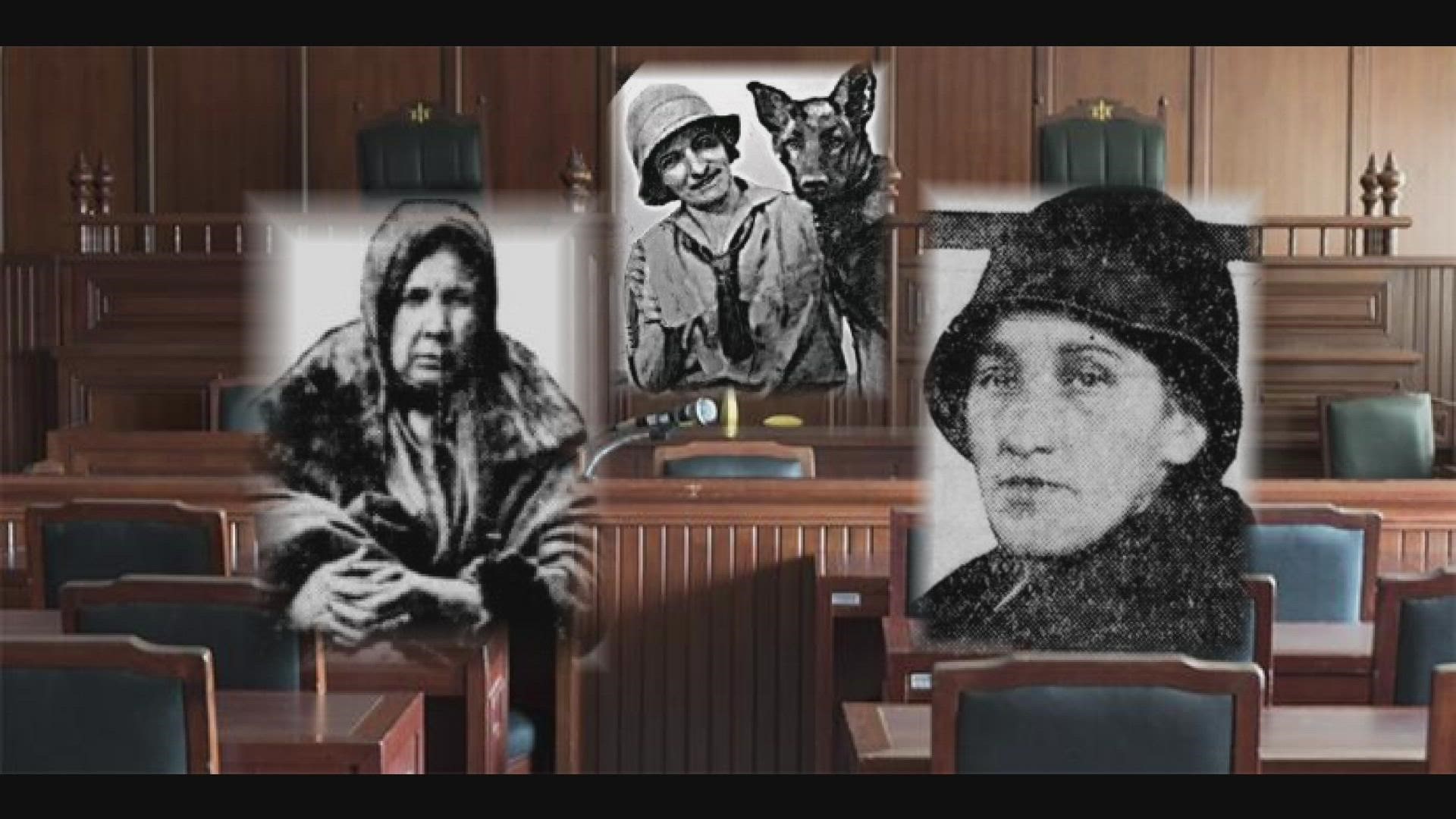BUFFALO, N.Y. — The Buffalo History Museum is currently showcasing the work of an artist from Oregon, which is a homecoming of sorts. Marie Watt is also a member of the Seneca Nation. Her exhibit is meant to shed a new light on history. The story of a murder case that put societal beliefs are prejudice on trial.
The exhibit is called "Hodinöhsö:ni' Resurgence: Marie Watt, Calling Back, Calling Forward." A key part of the exhibit is the name Nancy Bowen, a co-defendant in a 1930 and 1931 murder trial. The trial was called the scandal of the century and grabbed headlines around the world because it combined murder, adultery, witchcraft, and a clash of cultures.
"It played out through the media there were issues of you know they were there were conflicting belief systems that really were also the subject of the trial in addition in addition to Nancy Bowen and her co-defendant Lila Jimerson," said Anthony Greco, director of exhibits at the Buffalo History Museum
Jimerson is believed to have convinced Bowen that a French woman named Clothilde Marchand was a witch, responsible for the death of Bowen's husband. They were apparently led to that conclusion through the use of a Ouija board. Greco says that many, however, argued that what was behind it all was Clothilde's husband Henri Marchand.
"He used them and manipulated them into, it was believed, into killing his wife Clothilde," Greco said.
Henri Marchand was a sculptor at the Buffalo Museum of Science, who visited the Seneca Nation quite often, and used many native women, including Jimerson, as models. He claimed that he had to have intimate relations in order to make them comfortable enough to pose. A series of letters that were discovered indicated he had a long affair with Lila Jimerson.
"You really need to look at Henri Marchand as kind of the mastermind behind the entire thing. He had a mastery and he understood the Haudenosaunee belief system that he really leveraged to take advantage of these two women," Greco said.
"Though there are a lot of questions about exactly how it played out, there were letters that were allegedly sent from a psychic or medium based in Cleveland that were convincing Nancy Bowen to put an end to this white witch who is living in Buffalo, this French woman who had cast spells upon different Indigenous people and had caused their death."
Bowen, a Seneca tribal healer, confronted Clothilde at the Marchand home on Riley Street in Buffalo and accused her of being a witch. Bowen admitted to beating Clothilde with a hammer, then stuffing chloroform-soaked paper down her throat. In killing Marchand, Bowen said she believed that she was freeing her of evil spirits.
Witnesses reported seeing two native women outside the home. Within days Bowen and Jimerson were arrested on the Cattaraugus territory. While they were charged with the murder, the case took on a life of its own. The headlines dripped of racism, and the case reeked of ignorance of the Seneca culture and issues surrounding sovereignty.
While Nancy Bowen may have been convicted in the media coverage, the first trial ended in a mistrial. In the second trial Jimerson was acquitted and freed. Bowen was released after pleading guilty to manslaughter and accepting a sentence of time served.
"Even though it's 2022 this case was in 1930 it is still relevant today," says Joe Stahlman, the director of the Seneca Iroquois National Museum who served as an advisor for this exhibit. "It's still going on today a lot of the race issues a lot of mistrust of the media and of government."
Those are things that he hopes can be resolved through communication, and looking at the past through the scope of honesty. In the meantime, the name Nancy Bowen remains glowing above the portico of the history museum, calling out to people to remember her name.

